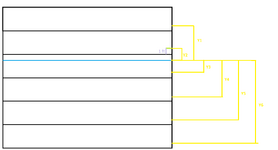EmilianoS87
Mechanical
- May 5, 2022
- 17
I was reviewing some calculation notes on this topic and noticed that when the test point is above the design liquid level, the Y value becomes negative. If I proceed with the equations using a negative Y value, I sometimes end up with unusual and excessively high thickness requirements for shell courses that may not even be in contact with the liquid.
In your experience, how do you handle this? Should this check be skipped for shell courses located above the design liquid level, or is there a specific approach to account for this scenario?
In your experience, how do you handle this? Should this check be skipped for shell courses located above the design liquid level, or is there a specific approach to account for this scenario?

